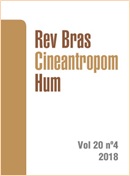Diversity of parameters in the muscle strength evaluation of Brazilian school children and adolescents: a systematic review
DOI:
https://doi.org/10.1590/1980-0037.2018v20n4p497Abstract
Muscle strength (MS) is considered important indicative of global health regardless of age or clinical condition. The aim of this study was to summarize evidence from research carried out in Brazil that investigated MS in school children and adolescents, showing the objectives, tests, protocols and quantitative of youngsters who met the health criteria for MS. Systematic review conducted in the PubMed, Web of Science, Scopus, Sportdiscus, LILACS and Scielo databases, with complementary searches in reference lists. In all articles, the risk of bias was analyzed. Of the 15,609 articles initially identified, 27 were included, comprising data from 29,604 children and adolescents. The 27 studies included presented moderate (37%) and low risk of bias (63%). Three out of four studies investigating MS in children and adolescents were carried out in southern and southeastern Brazil (77.7%). It was found that 65.9% of boys and 58.2% of girls had adequate levels of MS for health, with results varying from 14.8% to 66.0% in girls and from 20.4% to 76.9% in boys. Several MS measurement protocols were identified; however, horizontal jump was the most used test to evaluate MS (59.2%). MS is a physical valence searched in children and adolescents and a variety of protocols are used. In addition, it is necessary to propose MS cutoff points based on health criteria for the accurate estimation of this physical valence in children and adolescents in Brazil.



